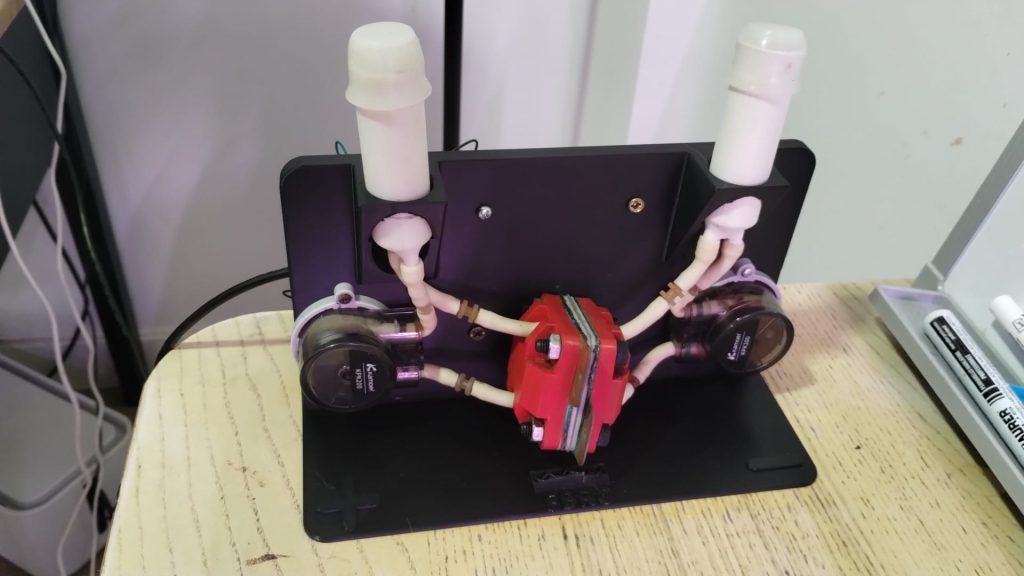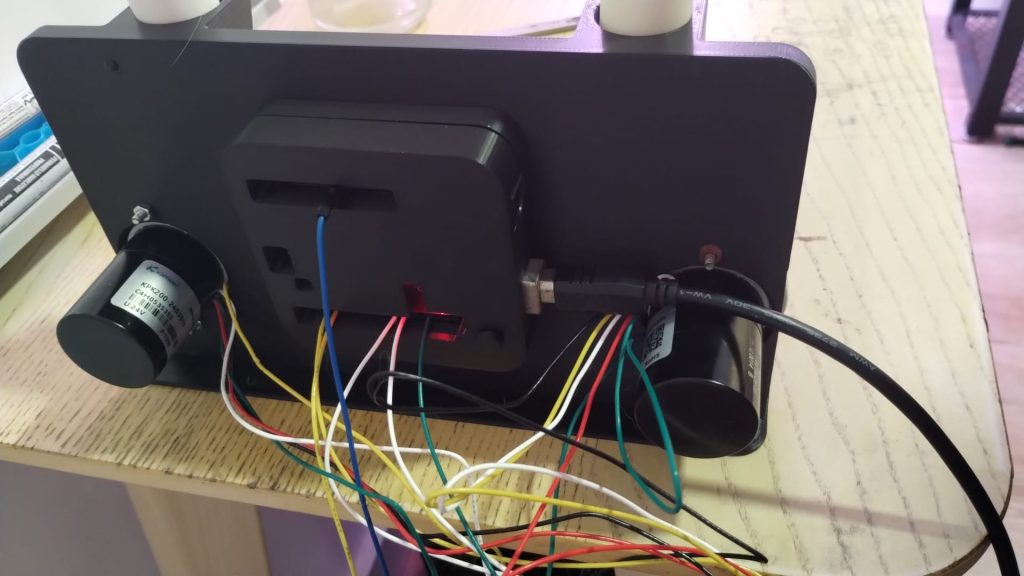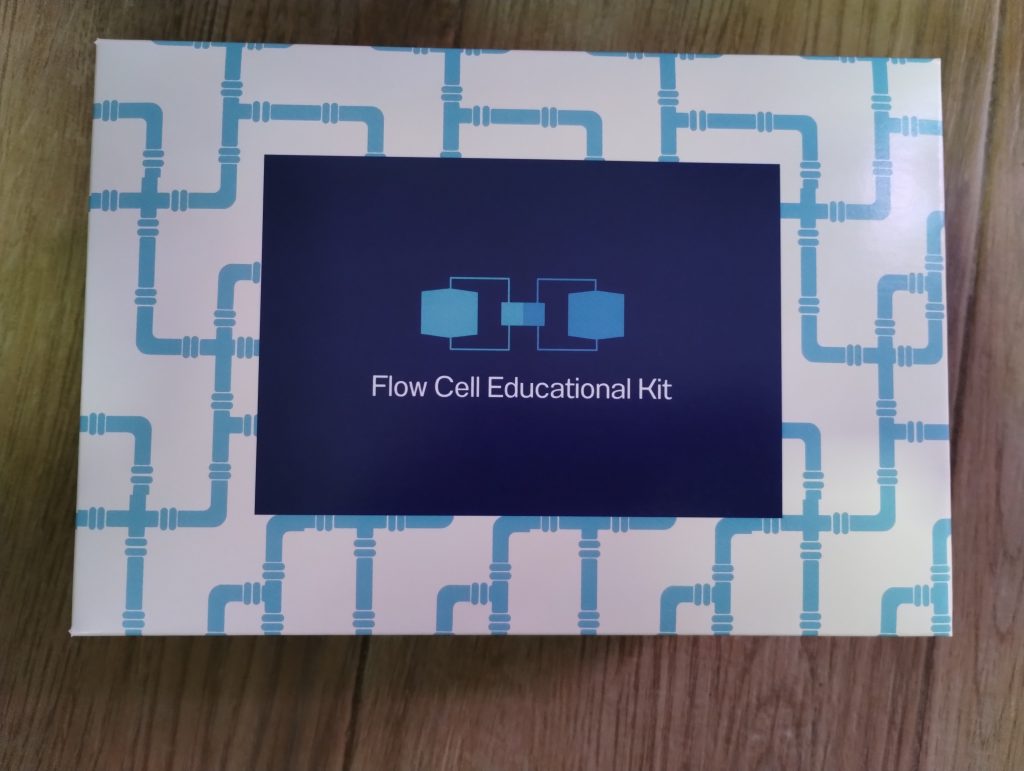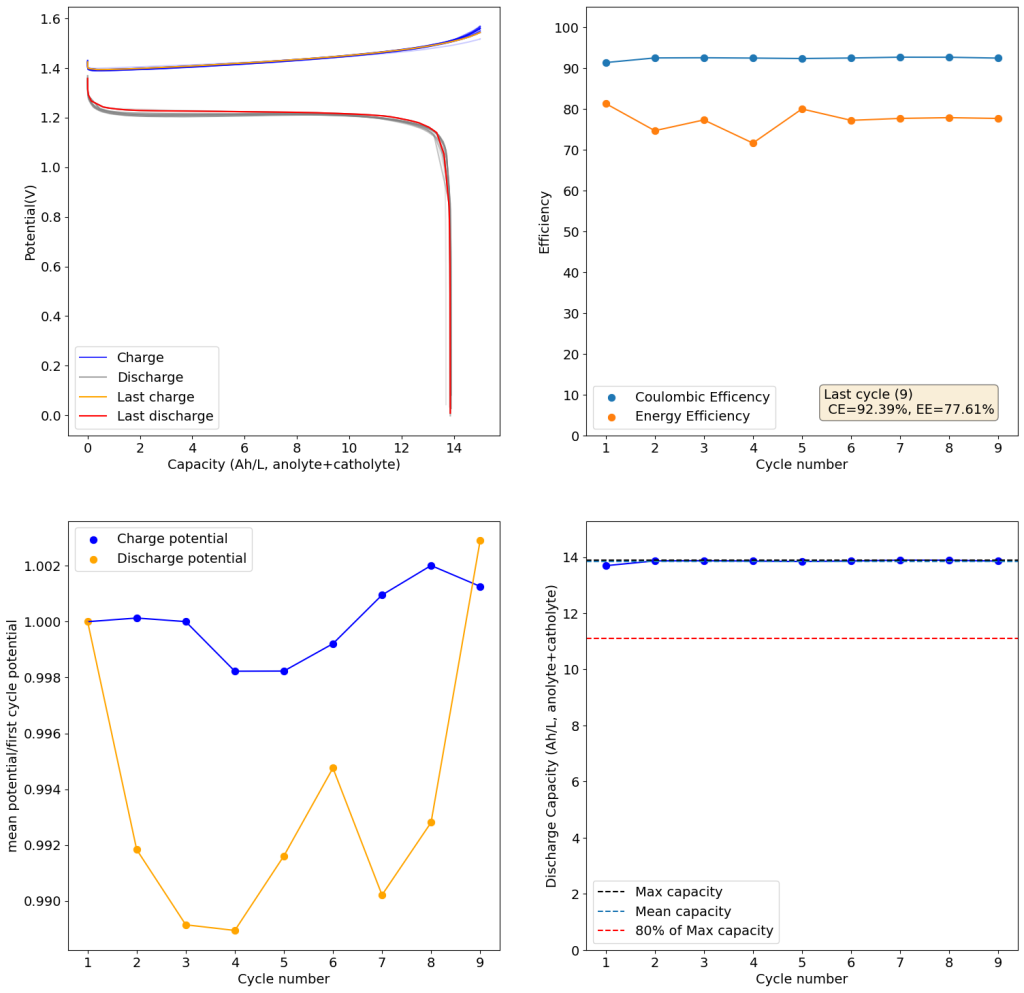After a lot of work on our small scale flow battery kit, the kit has now reached a form factor that is stable and will only require minor cosmetic changes from now on (to do things like hide exposed cabling, etc). The instructions for assembly of the kit are available at fbrc.dev. The kit is the culmination of 2 years of hard work from our team at the Flow Battery Research Collective, especially Kirk Smith and Josh Hauser, who both worked tirelessly with me in the design and fabrication of the kit.


Our final design uses Kaomer KPK200 24B pumps, polypropylene reservoirs and what Kaomer calls “Tygon Chemical Tubing” which seems to be a PTFE lined BPT tubing material. These materials are all compatible with the Zn-I chemistry and are also expected to be compatible with chemistries like Vanadium, Fe-Zn, pure Fe and even non-aqueous chemistries. The 24V pumps are driven using PWM signals coming directly from the Arduino, they also send digital signals back to the arduino that provide us with RPM information. This allows us to control the speed of the pumps quantitatively and achieve more robust experimentation. The mystat software has also been modified to allow direct control of the pumps from the software as well as monitoring of these readings.

As you can see above, we have also created a box design for the flow battery kit, which we have titled “Flow Cell Educational Kit” as applications for it can go beyond flow batteries. We may start publicly selling kits sometime in the near future, if there is enough interest from people wanting a plug-and-play solution (especially for academic environments). If you’re an academic researcher, battery enthusiast or professor looking to provide low cost flow battery setups for your students, feel free to let us know is such a kit would interest you.

Above you can see some experimental results using the kit and Zn-I chemistry. We are able to reproducibly cycle Zn-I chemistries to very decent SOC values, even though the above tests have been carried out without any nitrogen purging of the system. This is a testament to the robustness of the system and the Zn-I chemistry we are using as a showcase for it.
With all that said, none of the above would have been possible without the support of our financial sponsor for this project, the nlNet foundation. We are ever thankful for all their support in this endeavor. Thanks to them, we are also building a large scale, fully open source kit, that we also hope to release later this year.

This flow battery kit work is being funded by the Financed by Nlnet’s NGI0 Entrust Fund. We are also collaborating with the FAIR Battery project.